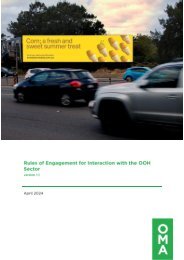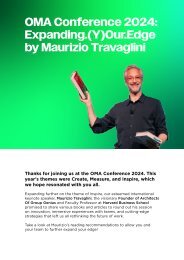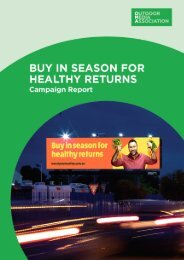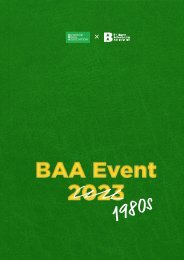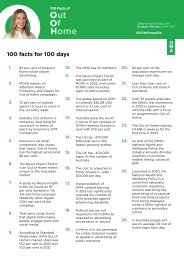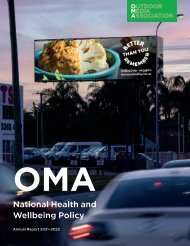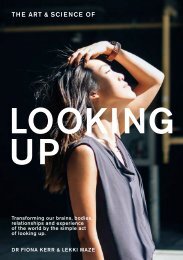OPEN 2
The OPEN series was born from the desire to create a forum for applauding and interrogating strong creative design within the Out of Home (OOH) industry. Illustrating how OOH is part of our cityscape, our commute, our weekend and our shopping and holiday experiences, OOH is ‘the original tweet’ and it cannot be switched off, ignored or fast forwarded. Big, bold, cheeky, simple, clever and controversial, OOH is the ultimate creative stage, allowing brands to be unique, contextually relevant and targeted while reaching mass audiences.
The OPEN series was born from the desire to create a forum for applauding and interrogating strong creative design within the Out of Home (OOH) industry. Illustrating how OOH is part of our cityscape, our commute, our weekend and our shopping and holiday experiences, OOH is ‘the original tweet’ and it cannot be switched off, ignored or fast forwarded. Big, bold, cheeky, simple, clever and controversial, OOH is the ultimate creative stage, allowing brands to be unique, contextually relevant and targeted while reaching mass audiences.
You also want an ePaper? Increase the reach of your titles
YUMPU automatically turns print PDFs into web optimized ePapers that Google loves.
INTERACT WITH ME<br />
Luke Chess, Creative Director,<br />
MJW Australia<br />
...<br />
Every year, approaching Australian<br />
television’s ‘night of nights,’ the Logie<br />
Awards, a promotional competition is run<br />
– the prize being a seat for you, the average<br />
punter, at one of the tables among the stars<br />
on the night.<br />
I imagine this would be thoroughly<br />
awful. After all, you’d be sitting there as ‘the<br />
competition winner’ among a group of A, B<br />
and C-list celebrities, not because you’d worked<br />
to get there, or were a genuine part of that<br />
community, but only because you’d bought<br />
a certain magazine or called a 1900 number.<br />
After a cursory chat establishing your complete<br />
lack of credentials, I reckon you’d be ignored<br />
by all; overlooked and lonely for the rest of the<br />
evening. “A competition you say? How lovely.<br />
Anyway Rove, as I was saying …”<br />
Which brings me, in a roundabout way,<br />
to the subject of advertising.<br />
There’s currently much agitation among<br />
marketers and ad types, particularly stimulated<br />
by the impact of digital technologies, about<br />
the relative merits and features of ‘bought’<br />
vs ‘earned’ media.<br />
Now it goes without saying that digital<br />
has affected practically every industry on<br />
earth. Photographers no longer use film.<br />
Libraries have done away with books. Bank<br />
robbers no longer use masks and crowbars etc.<br />
And while the impact upon advertising media<br />
is perhaps more subtle, it’s equally forceful.<br />
As we know, access to the ears, eyeballs<br />
and brains of ‘consumers’ (referred to from<br />
now on more correctly as ‘people’) has become<br />
democratised. Via web, mobile, or invisible<br />
codes that materialise only in a virtual<br />
world, practically anyone can now start<br />
a conversation. And with a smartphone in the<br />
pocket of nearly every Australian, practically<br />
anyone can participate.<br />
This means that to any real degree the<br />
only distinction between ‘bought’ and ‘earned’<br />
media exists on a brand’s balance sheet. People<br />
know not and care not for the difference. They<br />
simply experience the clamour of thousands<br />
of voices wanting their attention. Howard<br />
Gossage’s oft-quoted observation from half<br />
a century ago has never been more relevant:<br />
“Nobody reads ads. People read what interests<br />
them. Sometimes it’s an ad.”<br />
Sitting in the public spaces of<br />
Melbourne’s Federation Square during the<br />
2011 Melbourne Writers’ Festival, which would<br />
interest you more? An expected advertising<br />
message on the enormous billboard opposite?<br />
Or a clever short story embedded into your<br />
phone’s WiFi selection options – DRAGON<br />
SLAYER PURSUED BY ANIMAL RIGHTS<br />
ACTIVISTS – to promote the festival? (Along<br />
with many other stories that made up the<br />
festival’s Wi-Fiction campaign.)<br />
When a company doesn’t even need to<br />
pay for bricks and mortar stores – as Chinese<br />
retailer Yihaodian proved by opening 1,000<br />
virtual ones in augmented reality overnight –<br />
why should they pay for any media to promote<br />
themselves?<br />
The answer is, like winning that Logies’<br />
competition, paid media at least guarantees<br />
a seat at the table. And visibility is still crucial<br />
to making an impact – it’s just that it’s no<br />
longer sufficient (if indeed it ever was). When<br />
you’re appearing in paid Out-of-Home (OOH)<br />
advertising nowadays, it’s not enough to be the<br />
most interesting poster in town. You need<br />
to be more interesting than the skywriter<br />
overhead, the bus driving past, the smartphone<br />
in my hand … or, perhaps, more interesting with<br />
the smartphone in my hand.<br />
In the US, clothing behemoth GAP now<br />
supplements its traditional bus stop ads with<br />
163 /



